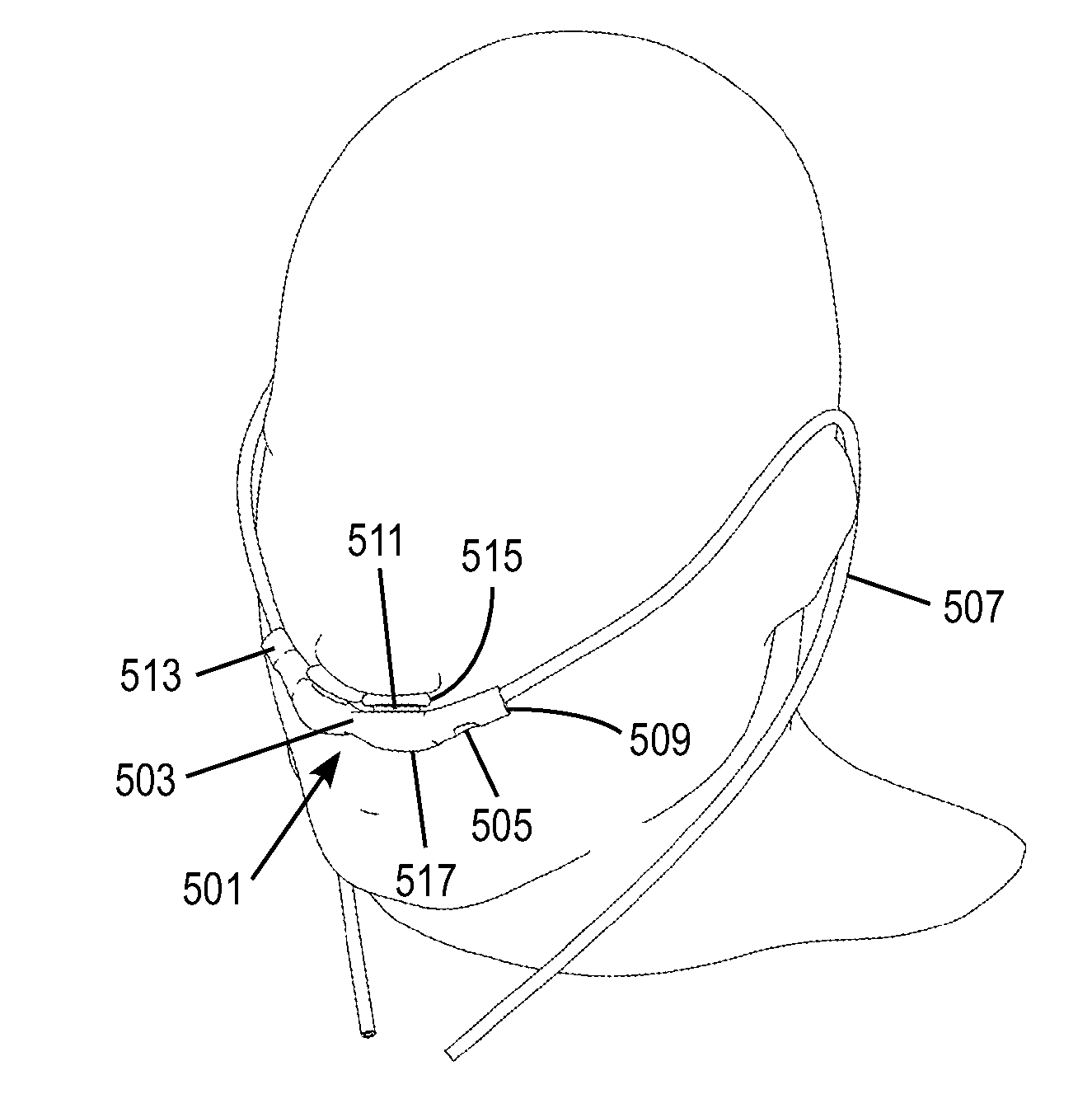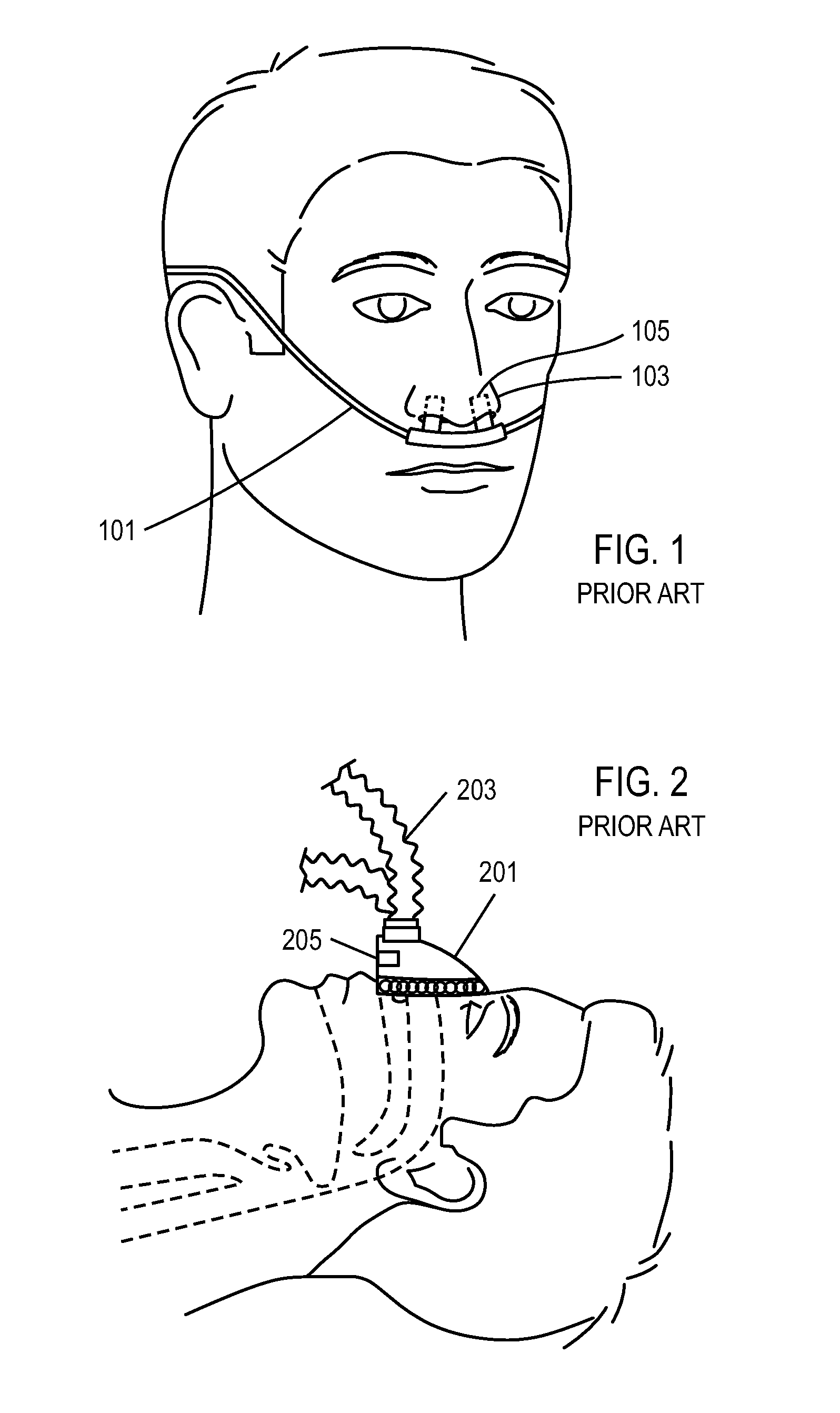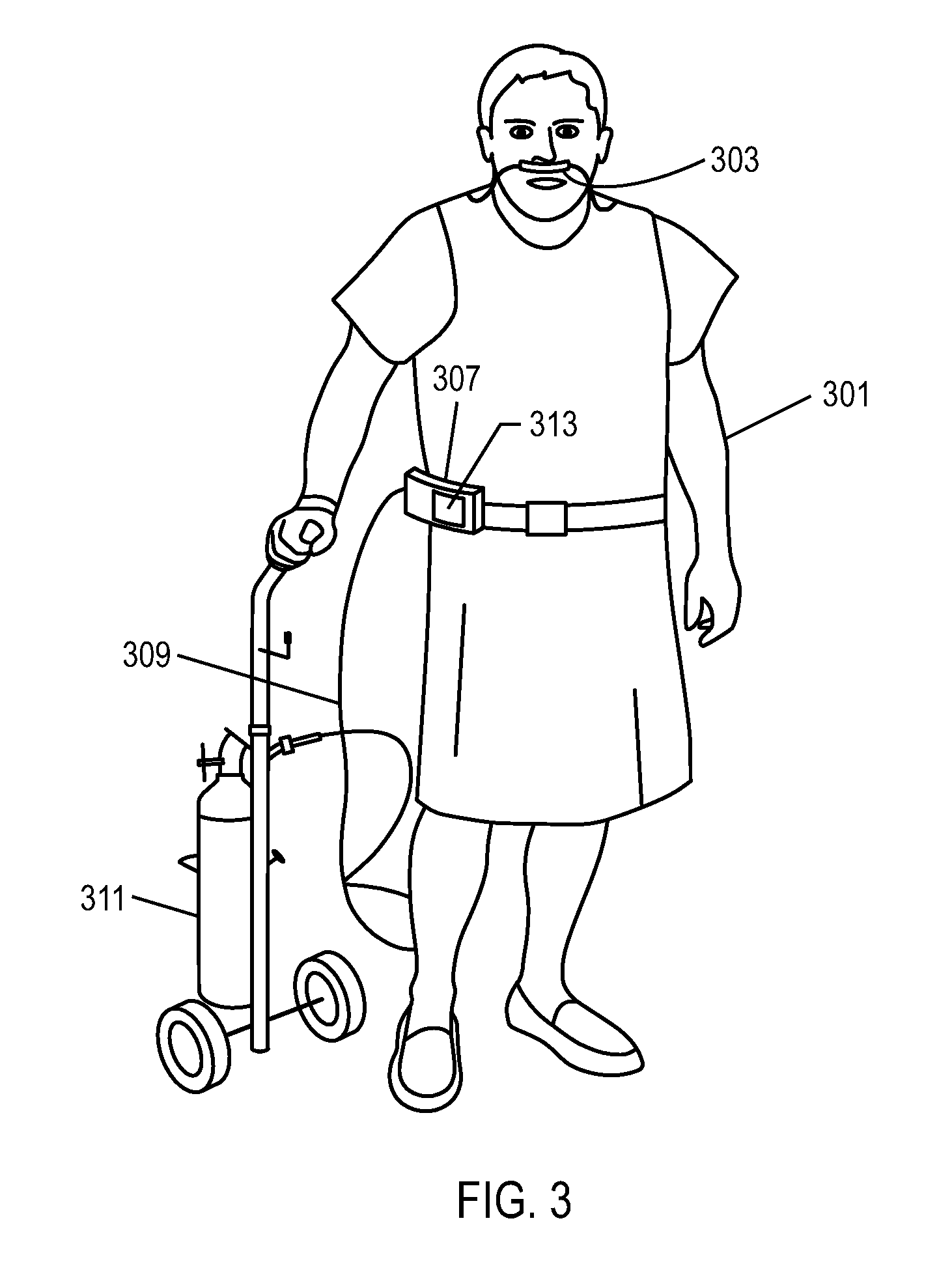Methods, systems and devices for non-invasive ventilation including a non-sealing ventilation interface with an entrainment port and/or pressure feature
a non-invasive ventilation and interface technology, applied in the field of ventilation therapy, can solve the problems of not being able to mechanically help, consuming a significant amount of oxygen, and burdening the patient,
- Summary
- Abstract
- Description
- Claims
- Application Information
AI Technical Summary
Benefits of technology
Problems solved by technology
Method used
Image
Examples
Embodiment Construction
ioning cushion.
[0057]FIG. 31 is a schematic view of an optional embodiment in which the ventilation gas is delivered to one side of the mask, with other features including a snap fit nasal cushion and a flex joint in the mask between the cushions.
[0058]FIG. 32 graphically shows how the patient's work of breathing may be beneficially affected by the invention when the invention is used for lung disease or neuromuscular disease applications.
[0059]FIG. 33 graphically shows lung volume on the x-axis and lung pressure on the y-axis to illustrate how the lung volumes achieved with NIOV on a lung simulator bench model in comparison to conventional ventilation.
[0060]FIG. 34 graphically illustrates the lung volumes achieved with NIOV in comparison to oxygen therapy, using the lung simulator bench model.
[0061]FIG. 35A graphically shows a square waveform gas delivery pressure, according to one embodiment.
[0062]FIG. 35B graphically shows the volume delivery of FIG. 35A.
[0063]FIG. 35C graphicall...
PUM
 Login to View More
Login to View More Abstract
Description
Claims
Application Information
 Login to View More
Login to View More - R&D
- Intellectual Property
- Life Sciences
- Materials
- Tech Scout
- Unparalleled Data Quality
- Higher Quality Content
- 60% Fewer Hallucinations
Browse by: Latest US Patents, China's latest patents, Technical Efficacy Thesaurus, Application Domain, Technology Topic, Popular Technical Reports.
© 2025 PatSnap. All rights reserved.Legal|Privacy policy|Modern Slavery Act Transparency Statement|Sitemap|About US| Contact US: help@patsnap.com



